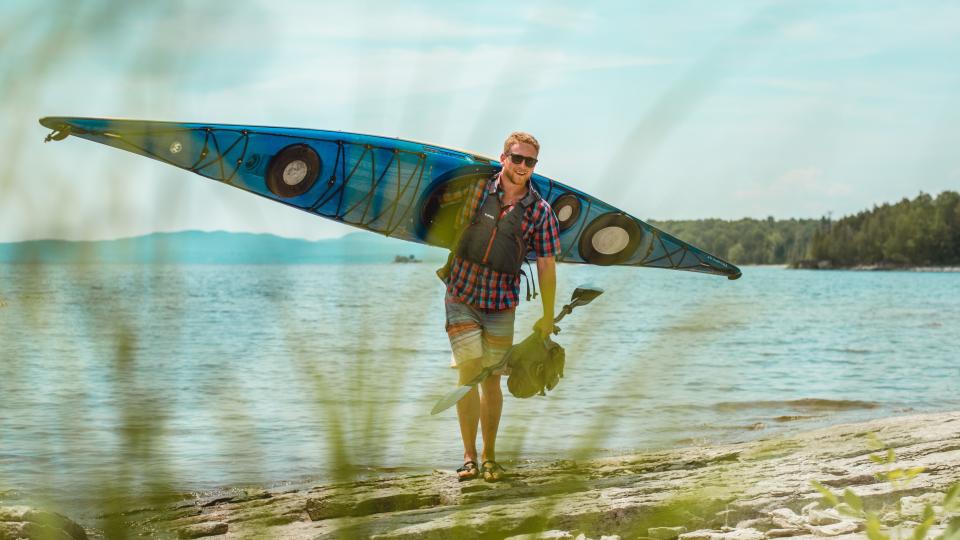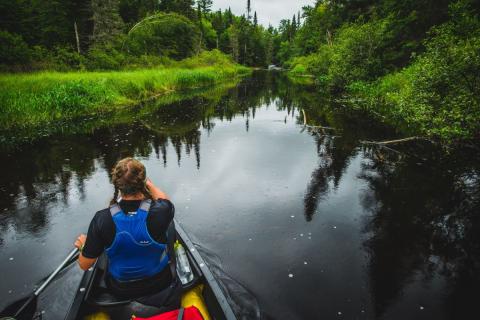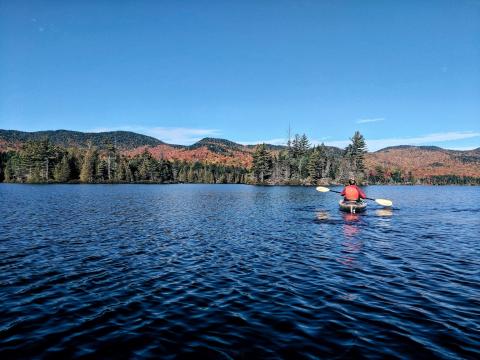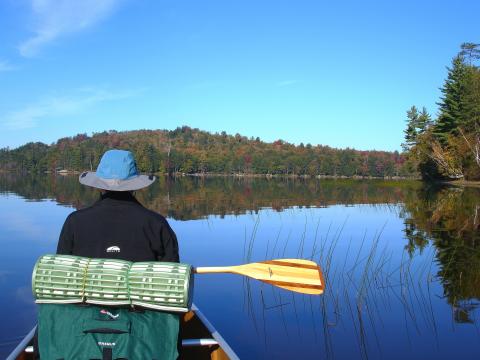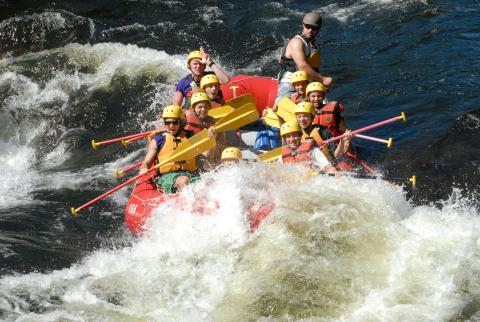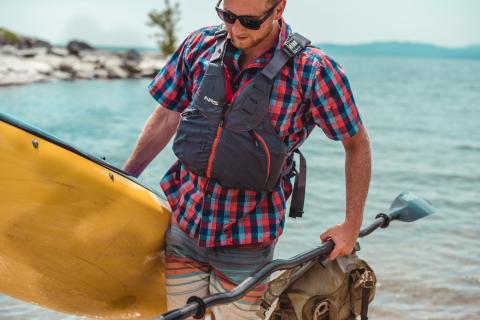Paddling Safety
No matter what type of paddling you choose to do in the Adirondacks, it's essential to take measures to ensure the safety out there on the lake or river.
1. Life Jacket
By New York State law, kids have to wear personal floatation devices (PFDs), and it's usually recommended that adults do too. For more on finding the right PFDs, visit the U.S. Coast Guard's website.
2. Safety Whistle/Light
The U.S. Coast Guard also recommends that while out on the water during the day you carry a whistle or noisemaking device that allows you to alert other boaters to your presence to avoid collision. At night, it's a good idea to carry a flashlight, or attach a light to your boat, too.
3. Sun & Weather Protection
While there's plenty of Adirondack shade on the hiking trails, there may not be much out on many of the bodies of water you'd be paddling on. So take care to cover your skin properly, either with clothing or with sunscreen. And if you're paddling during cooler weather in the spring and fall, you will want to make sure you dress appropriately.
4. Drinking Water
Just because you're on the water doesn't mean you don't need to stay hydrated. Be sure to bring a canteen or a bottle of water to re-hydrate throughout your journey.
